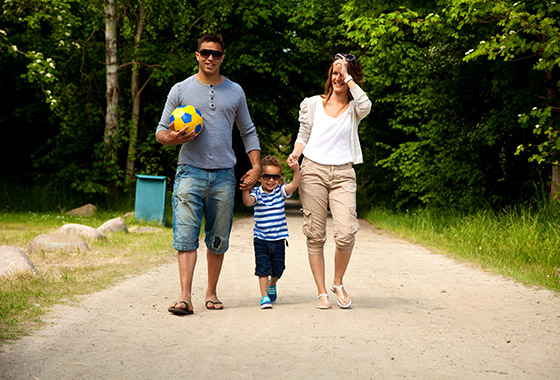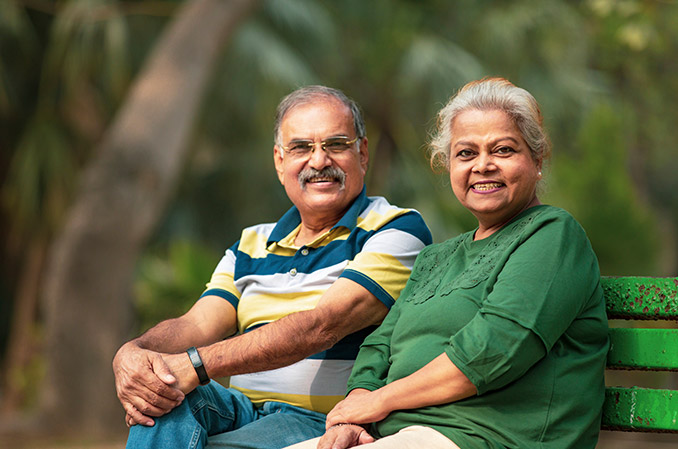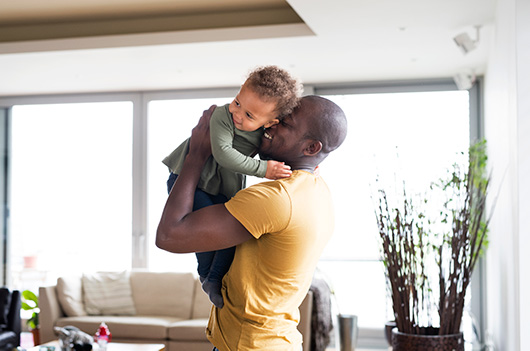People with lived experience who want to choose a positive support have a lot of choices. It can be hard to figure out how to pick a positive support that will be the best fit for each person’s needs. Finding the right person to help can be challenging as well. Sometimes it can be difficult to find the services that are willing to use the positive supports that are needed to improve quality of life. Being an advocate is an skill that is important for everyone to learn about how to use. Here are some helpful places to learn more about what you can do to advocate for what you need:
Overview of Families and Caregivers
There are many types of families. Each person defines his or her family in her own way. Not all families include a mother, father, and child. A family might include same sex parents, single parents, grandparents, aunts and uncles, cousins, siblings, and close friends. Positive supports can help families live happy and productive lives. Sometimes a positive support is used to improve the health and wellness of the entire family. Other positive supports help family members to care for an elderly parent. A positive support practice can be used to teach young children new social or emotional skills. Positive supports help family members learn how to empower an adult child with a disability to live a more independent life. Any family member can benefit from positive support. A positive support practice should take into account the culture and context of the family setting. Positive supports empower families to make changes that will improve quality of life for everyone living in the home.


Stories Across the Lifespan
The following stories describe how positive supports can be used to support families across a variety of settings.
- ABA and Community Living: Roberto, Don, and Paul (MNPSP web page)
- Assertive Community Treatment: Melissa (MNPSP web page)
- Person-Centered Practices and Early Childhood: Emily and Michael (MNPSP web page)
- Person-Centered Practices and Families: Steven and Tony (MNPSP web page)
- ABA and Families: Garcia Family (MNPSP web page)

Families Resources
Minnesota Resources
- Minnesota Adult Mental Health Assertive Community Treatment Information (external web page)
- Minnesota Standards for Assertive Community Treatment (external web page)
- Dartmouth Assertive Community Treatment Scale (DACTS) (pdf)
National Resources
- Assertive Community Treatment Summary (external web page)
- Cost Effectiveness of Assertive Community Treatment (pdf)
- Culturally Sensitive Collaboration within Person-Centered Planning (2003) (pdf)
- Person-Centered Thinking: Improving the Quality of Person-centered Planning (pdf)
- Making Person-Centered Planning Mainstream: How to Get Started (external web page)
- Information About MAPS (external web page)
- Friends; Connecting People with Disabilities and Community Members (pdf)
- Family Caregivers of Children with Special Health Care Needs: The Need for Caregiver Support as Truly Family-centered Care (pdf)
- Helen Sanderson Associates Person-Centered Thinking Tools (external web page)
Minnesota Resources
National Resources
- Beach Center: Operation Positive Change: PBS in an urban Context (external web page)
- When Things Get Out of Control: Managing Escalating Behavior by Meme Hieneman & Milissa Yeagley (external web page)
- The Wraparound Process User’s Guide for Families (external web page)
- Indiana Resource Center– Positive Behavior Supports Creating Meaningful Life Options for People with ASD (Carr & Pratt) (external web page)
- Positive Behavior Support Research with Families (pdf)
- Impact: Sexuality Feature Issue on Sexuality and People with Intellectual, Developmental and Other Disabilities (external web page)
- Impact Newsletter: Feature Issue on Parenting Teens and Young Adults with Disabilities (external web page)
Positive Support Strategies for Advocates & Families
Below are some articles designed to provide important background information about topics that are relevant across lifespans and settings.
- Applied Behavior Analysis in Practice – ABA is focused on better understanding how different variables impact an individual’s behavior.
- Assertive Community Treatment History – A group of mental health professionals reviewed the mental health system to determine strategies to help people remain in their communities.
- Person-Centered Planning and Promoting Quality of Life – One way to think about person-centered practices from a systems perspective is to use a Three-Tiered Model of Positive Supports.
- PBS and Preventing Problem Behavior Using the Three-Tiered System – Considering larger organizational issues can be a helpful way to create a positive climate and prevent challenging behavior.
- Positive Behavior Support and Individualized Planning – The first step in an individualized positive behavior support process at Tier 3 is to set up a person-centered plan.
- Trauma Informed Approaches and Three-Tiered Systems of Positive Support – Trauma informed care approaches are implemented across education and human service organizations.
- Relationship Between Applied Behavior Analysis and Positive Behavior Support – Understand the history and current relationship between Applied Behavior Analysis and Positive Behavior Support

